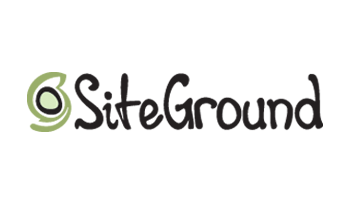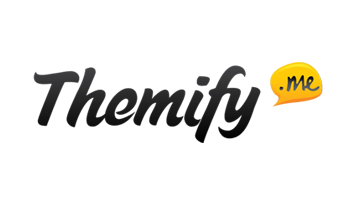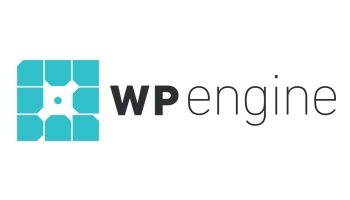The Story of ThemeIsle – What it Takes to Build a Successful Premium Theme Shop!
- By
- 1 Comment
In today’s WordPress ecosystem, ThemeForest reigns supreme when it comes to premium themes. People make thousands upon thousands of purchases there each day — with the largest themes receiving somewhere between 100–2000 sales a week! While ThemeForest has undoubtedly played a huge role in bringing variety to the theme scene, it’s also come close to becoming a de-facto monopoly.
Nevertheless, in the last couple of years or so, it’s been interesting to see smaller marketplaces continuing to pop up all over the place — with some of them doing extremely well. One such theme shop is: ThemeIsle. I reached out to Ionut Neagu and before I knew it, we were chatting away on Skype. This article is the result of our virtual coffeehouse meetup: The Story of ThemeIsle and What it Takes to Build a Successful Premium Theme Shop!
Note: We had a pretty in-depth discussion, so to boil it all down I have paraphrased almost all questions and answers.
Q) How did your career begin?
My development career started at Freelancer, where I took all the jobs I knew how to do — and even some that I didn’t. For the ones I didn’t know how to complete, I figured things out as I went along, which allowed me to take on more and more work.
That being said, if you work all day as a freelancer, you can only get so far. I saw two ways forward: I could try and get as many clients as possible by outsourcing my work, or I could find something I do well and focus on that one thing.
I started outsourcing my work to a local group in Romania. This was great initially, but I soon bumped into economics. If you outsource something, you retain a comparatively small amount of the original value. This means that you need to get a lot more clients and spend most of your time in management — the process is inefficient and soon becomes very very stressful.
I then tried the other strategy: finding something I can do well and focusing on it. I come from a marketing background, so approached this with a bit of an SEO mindset. I found a moderately deep keyword — “PSD to WordPress” — and focused my energies on ranking for it in the SERPs. Within two months my site, CodeinWP, was on the first page for the term.
The next problem I faced was pricing. I initially started with a $300-$400 price, which wasn’t bad at first, but I soon realized wasn’t anywhere near enough to justify the time needed to produce a quality product. The solution was to gradually raise the prices. We’re not actually taking clients anymore, but up until a few months ago the average price was around $1500 per job.
The real problem I bumped into, however, is that I’m not all that good at sales or managing client expectations. If you’ve ever had a service-based company, you know what this means. A client comes in and pays you $1000 for a WordPress theme. “Oh, but while you’re there, could you rework the logo a tiny bit?” It is extremely difficult to handle these requests well. If you do them for free you’re an awesome company, but you’re wasting your time financially. If you ask $20 for it, you’re setting yourself up as a cheap company, and if you ask $200 for it, you’re setting yourself up as an ‘unreasonable’ company.
By now however, we’d developed a handful of free themes, which we were offering on a themes section of our site. I’d realized that when we had less client work, we could create free themes in order to help generate some additional traffic. I then figured this could be a good starting point for a premium theme shop.
Q) How did ThemeIsle begin?
In November 2012 I asked one of our developers to work full time on the idea of creating a separate theme shop. We got the mascots designed, the workflows set in place, the website was created — the whole process, from start to finish, took a full six months.
While this was going on, I acquired Ready Themes (which I have since sold) to try and learn about the theme shop business as much as I could.
Since we had some traffic we could send to ThemeIsle (the traffic from Codeinwp), I thought I would be able to convince some of that traffic to buy a theme. I was dead wrong. Once we launched ThemeIsle, it turned out that no matter what we tried, people wouldn’t buy our themes. In fact, in 2013 we didn’t make a single sale!
I thought perhaps $55 is too high for a theme, so I reduced the price to $37. This had absolutely no effect. No matter what themes we added, no matter how hard we tried, we just couldn’t sell a theme!
As it turned out that there was only one product we had that people were willing to buy — a plugin. I acquired an already existing WordPress plugin called Tweet Old Post, it’s now known as Revive Old Post. We improved it, created a pro version with some additional features and added it to ThemeIsle.
While a few people bought the plugin, this was nowhere near enough to sustain our business. Plus, it is also a bit worrying since the site is, after all, called Themeisle. At this point I decided something had to be done. We were running out of money fast, morale was very low, and as a result, we were running out of time.
I sold Ready Themes for a low five figure amount, which — after brokerage and other fees — was enough to keep the business going for another three months. I decided to drop everything and focus on only one single thing: our Zerif Pro Theme (the theme that now accounts for most of our sales).
Q) Tell me a bit about Zerif. How did the theme come to be and why do you think this was your icebreaker? Why is this the first thing that truly worked?
Zerif was actually made as a Bootstrap theme by a developer who worked for us on Codeinwp. I liked the theme a lot and thought it would be a good idea not to not have to start from scratch — plus we could also create WordPress others themes from it. I acquired the rights and we developed the theme from there.
It’s difficult to tell exactly why this theme in particular was the one… The theme didn’t really sell all that well on its own and sales really only started to pick up only when we created the — now extremely popular — free version: Zerif Lite.
The popularity of the free theme was certainly a big contributing factor, but even that doesn’t necessarily account for it. Before Zerif we had a number of free/pro themes that didn’t sell. The thing that set Zerif apart was the way we approached making it. When we started, it was already a relatively successful HTML theme — this was likely a main factor.
Q) What makes ThemeIsle stand out from the pack?
This one is quite easy to answer — with a simple link. A year or so ago I posted a question on Reddit about how the community thinks a company like this should differentiate itself. I was lucky enough to get a great response that you can read on Reddit. The first paragraph pretty much sums it up:
“Drop all the bullshit. All the admin panels. All the custom colors. Everything. Kill it. Throw it out. Don’t include ten sliders, don’t even include 1.”
ThemeIsle focuses on simplicity and clarity. It seems there’s considerable frustration toward complex themes that force you to learn a new method of working each time you download a new one. We decided to follow the post’s guidance and truly get rid of all the unnecessary bits.
We made sure that any functionality you may need could be added via plugins, or better yet: child themes. Our code is very much WordPress standard, which means any developer can come in and work on it. If you need something, you can go on Fiverr and get someone to do it on the cheap.
Q) Do You Have Any Experience With ThemeForest? What do you think about them?
We don’t have a huge amount of experience, but I did try and upload something, the response was very bad. The overall feeling was that they don’t really care. They don’t like giving guidance and they aren’t willing to communicate.
I personally don’t like that they are so big. They have more than 50% of the market now, which is not good for the market itself. WordPress.org is the only place that has the potential to compete with then, but at the moment this just isn’t really happening at all.
I think it should be our job to compete with ThemeForest through WordPress.org — we need a lot more independent high-quality theme shops.
That being said, ThemeForest does have its place. It is a great way for budding developers to test the waters and earn some money from their work.
Q) What do you think about the direction of themes and plugins in general?
I see a lot of overly complex products out there. Themes should be simple — they should be just templates, nothing else. They should contain only HTML and CSS (and the basic PHP needed for them to function — of course).
There are a few situations where big themes would make sense. Primarily for single clients who don’t have a big budget to work with.
I think that when creating a website you should look for plugins first — to add functionality — and then for themes to style it all.
Q) What do you think of the direction of WordPress in general, where do you see it in the next few years?
The technical direction that WordPress is heading in and the current plan they have is not that important to me. What interests me most is those aspects that can help or affect my business, like the REST API, localized WordPress directory and so on.
I am also quite interested to hear the opinions of key people from WordPress.org though, because if they have a strong vision (like the recently announced Theme Customization adherence), the chances are that things will change.
Q) Do you have any advice for theme & plugin makers?
We’ve actually shared a lot of our experiences with our transparency reports. We’re currently assembling the third one but you can already see the first and second transparency report and easily draw your own conclusions.
In general, you should understand the market before you start out. Learn about lifetime revenue, conversion, and understand how pricing and advertising affect your business. Tweak and tune, use statistics to your advantage, build an audience as best you can and so on.
What I’m learning now is that you should find a model that allows you to sell at a much higher price than ThemeForest, an average basket of $100–$150. If you sell themes for $40–$50, you can’t really do much in terms of growing your business with that amount of money. Promotion is key to growth and promotion goes back to pricing. When you get $250 per customer, you can pay $125 to marketing channels like Adwords, etc. Spending that kind of money is impossible with baskets of $55.
Note that this doesn’t mean that your theme has to cost $250. You may well sell a theme for $50 but have additional options — you can up-sell other products or services for example. The point is to make the final basket somewhere in the region of an average of about $250, so you can maximize your per customer revenue (and hence your per customer costs on marketing).
Also, be ready to spend money in general, investment is a key factor in growth as well. Until very recently, all the money we’ve made was re-invested into the company. After the initial success of Zerif, I hired four people on the spot. We are sponsoring WordCamps in Belgrade and Miami and we frequently spend money on testing new marketing ideas.
For example, we recently we sent out 50 T-shirts to 50 paying customers. I’m not saying this was a particularly good/bad idea — the point is the continuous experimentation with our resources.
Q) Any thoughts on employing the right people?
For me, employment is all about personality. If someone is a great person but an average coder, then the potential for working together is much higher than if the traits were reversed. I’m also big on hiring students. We are a team of 10 now and the average age is 24. The youngest is 18, the oldest is 27, and 8 of the team are still students!
I like the idea of a community and a culture of getting things done — instead of a culture of billable hours. We have a bi-monthly meeting at the office where everyone gets together and helps each other out with college work. These policies help smart students grow and develop themselves along with the company.
Anyone can take as much time off as they need and work as much as they feel is fair for their salary. This is one of the benefits of not having schedules or deadlines. The first three employees also have shares in the company — 4, 2 and 2 percent.
Conclusion
During my talk with Ionut it became clear that he would almost certainly have succeeded with his business one way or another. Why? Because there were some persistent themes (pardon the pun) interwoven between the lines throughout our conversation, I thought I’d summarize what I think the hallmarks of his success are:
Use all your available materials
While success was a long time in the making, the groundwork for it was laid down both in advance and continuously. It was clear from out conversation that he’s put in an incredible amount of effort and been extremely persistent. It was perhaps only a matter of time then, before things began to come together in one way or another.
Making a successful theme shop, as Ionut has, is only something you can do if you actually have the products to work with of course. Using a plugin on a theme site, making free themes in client downtimes, etc, all of these things contributed to the eventual success of the business.
You make your own luck…
Personally speaking, what others sometimes consider luck, I consider inevitability. There are, of course, some genuine cases of luck, like winning the lottery, etc, but in a business like this, luck can usually be traced back to a knack for seeing opportunity.
Ionut saw an opportunity in using a plugin to promote his theme site. He saw an opportunity to make a theme out of an already established bootstrap theme. He saw an opportunity to make free themes. The more opportunities you see, the more dead ends you may run into, but you also increase your chances of finding the successful path!
Don’t be afraid to fail
Ionut has failed plenty of times, and he’ll often go out of his way to share the details of his failures. He’s not afraid of failure — because as we all know, it’s often failure that allows you to figure out the path to success!
Leave a Reply
All comments are held for moderation. We'll only publish comments that are on topic and adhere to our Commenting Policy.




Congrats Ionut!